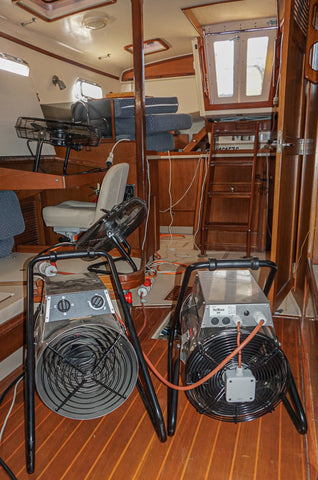My shopping cart
Your cart is currently empty.
Continue ShoppingNon-native termites and other wood-boring insects are occasionally found on recreational vessels on arrival from overseas. Until now, they have been treated by 'gassing the vessel' with a fumigant such as methyl bromide to kill the insects.
Biosecurity New Zealand has successfully trialled a new method of heat-treating (thermal remediation) to eliminate invasive termites on a recently imported yacht. The director of 'readiness and response' has said the recent successful use of 'heat treatment' is a significant achievement and represents a milestone in the use of non-fumigant solutions to effectively treat wood borne and other pests.
Also "In this case, being able to treat a vessel at berth was quick and convenient. It also supports BNZ's drive to use environmentally sustainable treatment options and reduce the use of chemicals and fumigants where possible."
The yacht in this case was found to have an infestation of the West Indian drywood termite, Cryptotermes brevis, which meant treatment was required to prevent this invasive pest from escaping and establishing in local environs.
Internationally, Cryptotermes brevis is regarded as one of the most damaging drywood termites. It feeds on dry wood and poses a significant threat to untreated timber framed homes and items made of timber.
BNZ says the new treatment involves circulating air throughout the sealed vessel at a constant high temperature for a minimum of 5 hours with close monitoring.
"Subsequent testing confirmed the treatment killed all termites present. Post treatment sample analysis by Biosecurity New Zealand’s Plant Health and Environment Laboratory has confirmed the effectiveness of the treatment.
BNZ will be exploring other uses for this method across New Zealand's biosecurity system as this treatment is shown to be effective against a range of parasitic and insect pests including bed bugs. An added bonus of the heat treatment is its ability to sanitise and freshen the treated environment, and there is no stand-down time to re-enter and re-use the treated space.

